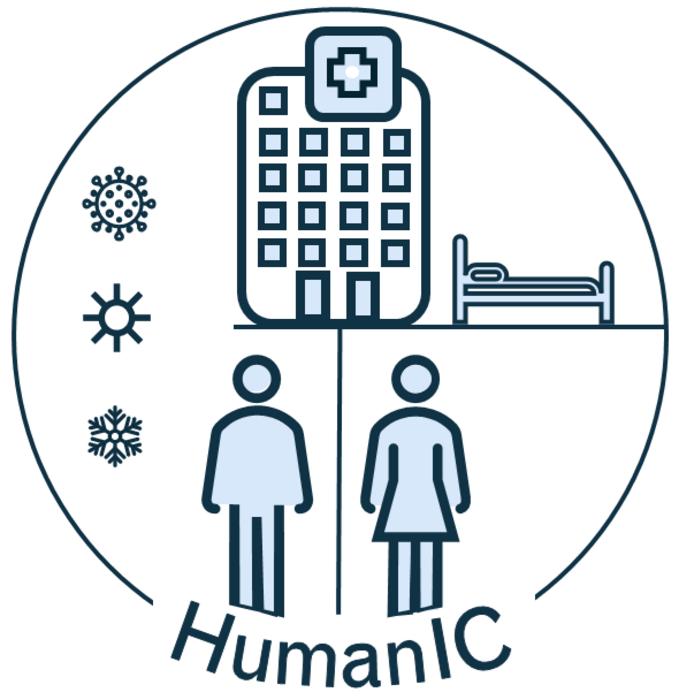European project aims to improve hospital design with human-centred climate approach
The HumanIC project, funded by the EU’s Horizon Europe programme, seeks to create a new generation of scientists and engineers who will redefine hospital environments through innovative indoor climate design.
In an ambitious move to tackle healthcare-associated infections and improve patient outcomes, a consortium of European universities and industry partners has launched the HumanIC project. This initiative aims to revolutionise hospital design by focusing on a human-centred indoor climate approach, moving away from traditional building-centric methods.
The project, which includes the Universidad Carlos III de Madrid (UC3M) among its partners, will develop new strategies to integrate the complex interactions between pollution sources, airflow distribution systems, and the clinical, patient, and energy needs of hospital environments.
A paradigm shift in hospital design
The HumanIC project represents a significant departure from conventional hospital design practices. Instead of concentrating solely on the building and its mechanical systems, this approach places the human experience at the forefront. The concept of a ‘human-centred indoor climate’ is defined as the micro-environment surrounding and in close proximity to a human body, emphasising the specific conditions that directly impact patients and healthcare workers.
This shift in perspective is crucial, as the indoor environment of hospitals plays a vital role in the safe and effective delivery of healthcare. From operating theatres and isolation rooms to wards and consulting areas, each space requires careful consideration to ensure optimal conditions for treatment, recovery, and overall well-being.
Tackling healthcare-associated infections
One of the primary drivers behind the HumanIC project is the pressing need to address healthcare-associated infections (HAIs). The statistics are alarming: over 4 million patients in the European Union acquire an HAI each year, with approximately 80,000 patients suffering from at least one HAI on any given day. This translates to one in every 18 patients in European hospitals being affected.
The hospital environment itself is responsible for 20% of all HAIs, highlighting the critical role that building design and human activities play in disease transmission. The global antimicrobial resistance crisis further compounds this issue, increasing both the cost and mortality risk associated with HAIs.
Research has shown that improving a hospital’s indoor environment can reduce the costs linked to airborne diseases by 9% to 20%. The HumanIC project will focus particularly on ventilation and indoor air quality, as numerous studies have demonstrated that airflow is a key factor in controlling the spread of and exposure to airborne pathogens.
Innovative research and training
The HumanIC network brings together leading academic teams from across Europe with partners from the hospital and healthcare HVAC industry. This collaboration aims to train early-career engineers and scientists in a new approach to human-centred indoor climate in healthcare environments.
At UC3M, researchers will focus on the experimental study and development of reduced models for complex flows in hospital environments. Using advanced techniques such as laser velocimetry, they will study fluid fields and develop simplified airflow models. These models will then be used to create algorithms for real-time flow estimation in operating theatres, potentially revolutionising the way we monitor and control air quality in critical healthcare spaces.
Addressing future challenges
The project also takes into account the impact of recent global events and ongoing environmental concerns. The COVID-19 pandemic exposed the limitations of current hospital designs, with many facilities operating over capacity and patients recovering in spaces not originally intended for such use.
Additionally, climate change poses new challenges for hospitals, including the need to prepare for future pandemics, manage heat-related diseases and infections, and reduce energy consumption while maintaining comfortable, human-centred thermal indoor climate conditions.
The HumanIC consortium aims to generate new knowledge on the physical transmission processes and interactions between pollutants and airflow. This understanding will be applied to optimise the design of technical solutions and develop novel methods for visualising and controlling the human-centred indoor climate in hospital environments.
A collaborative effort
The HumanIC project is a testament to the power of international collaboration in addressing complex healthcare challenges. With funding from the European Union’s Horizon Europe research and innovation programme under the Marie Sklodowska-Curie programme, the project brings together a diverse group of partners.
These include universities such as Warsaw University of Technology, Norwegian University of Science and Technology, and KTH Royal Institute of Technology, as well as industry partners like Granlund Oy, Halton Oy, and ActiveTek Medica. Healthcare institutions such as St. Olavs Hospital and Charité – Universitätsmedizin Berlin are also involved, ensuring that the research remains grounded in real-world clinical needs.
As the HumanIC project progresses, it has the potential to transform hospital design and operation, ultimately leading to improved patient outcomes, reduced infection rates, and more sustainable healthcare facilities. By focusing on the human element in indoor climate design, this innovative approach may well set a new standard for hospital environments across Europe and beyond.


